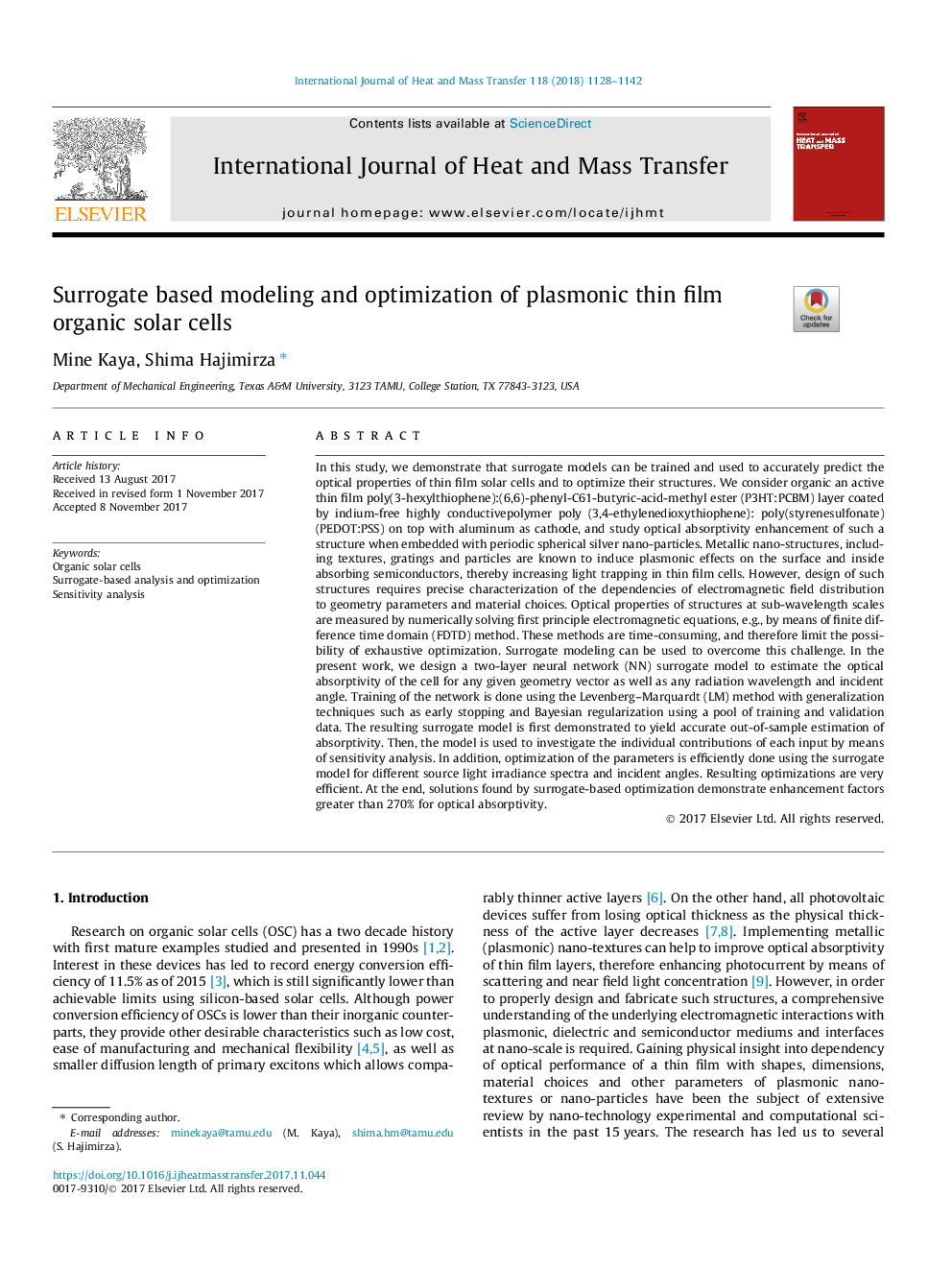| کد مقاله | کد نشریه | سال انتشار | مقاله انگلیسی | نسخه تمام متن |
|---|---|---|---|---|
| 7054827 | 1458022 | 2018 | 15 صفحه PDF | دانلود رایگان |
عنوان انگلیسی مقاله ISI
Surrogate based modeling and optimization of plasmonic thin film organic solar cells
ترجمه فارسی عنوان
مدل سازی جایگزین و بهینه سازی سلول های خورشیدی آلی سلول های نازک پلاسمونیک
دانلود مقاله + سفارش ترجمه
دانلود مقاله ISI انگلیسی
رایگان برای ایرانیان
کلمات کلیدی
سلول های خورشیدی آلی، تجزیه و تحلیل مبتنی بر جایگزینی و بهینه سازی، تجزیه و تحلیل میزان حساسیت،
موضوعات مرتبط
مهندسی و علوم پایه
مهندسی شیمی
جریان سیال و فرایندهای انتقال
چکیده انگلیسی
In this study, we demonstrate that surrogate models can be trained and used to accurately predict the optical properties of thin film solar cells and to optimize their structures. We consider organic an active thin film poly(3-hexylthiophene):(6,6)-phenyl-C61-butyric-acid-methyl ester (P3HT:PCBM) layer coated by indium-free highly conductivepolymer poly (3,4-ethylenedioxythiophene): poly(styrenesulfonate) (PEDOT:PSS) on top with aluminum as cathode, and study optical absorptivity enhancement of such a structure when embedded with periodic spherical silver nano-particles. Metallic nano-structures, including textures, gratings and particles are known to induce plasmonic effects on the surface and inside absorbing semiconductors, thereby increasing light trapping in thin film cells. However, design of such structures requires precise characterization of the dependencies of electromagnetic field distribution to geometry parameters and material choices. Optical properties of structures at sub-wavelength scales are measured by numerically solving first principle electromagnetic equations, e.g., by means of finite difference time domain (FDTD) method. These methods are time-consuming, and therefore limit the possibility of exhaustive optimization. Surrogate modeling can be used to overcome this challenge. In the present work, we design a two-layer neural network (NN) surrogate model to estimate the optical absorptivity of the cell for any given geometry vector as well as any radiation wavelength and incident angle. Training of the network is done using the Levenberg-Marquardt (LM) method with generalization techniques such as early stopping and Bayesian regularization using a pool of training and validation data. The resulting surrogate model is first demonstrated to yield accurate out-of-sample estimation of absorptivity. Then, the model is used to investigate the individual contributions of each input by means of sensitivity analysis. In addition, optimization of the parameters is efficiently done using the surrogate model for different source light irradiance spectra and incident angles. Resulting optimizations are very efficient. At the end, solutions found by surrogate-based optimization demonstrate enhancement factors greater than 270% for optical absorptivity.
ناشر
Database: Elsevier - ScienceDirect (ساینس دایرکت)
Journal: International Journal of Heat and Mass Transfer - Volume 118, March 2018, Pages 1128-1142
Journal: International Journal of Heat and Mass Transfer - Volume 118, March 2018, Pages 1128-1142
نویسندگان
Mine Kaya, Shima Hajimirza,
